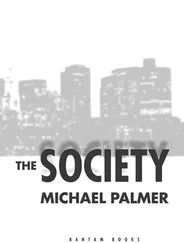This whistle-stop tour through history shows that ideas about civil society have passed through many phases without ever securing a consensus, even leaving aside all the other variants of civil society thinking that I have omitted in order to focus on the basics – such as non-western theories or theories about non-western societies, scholarship about African-American civil society in the United States, feminist contributions to the debate and others. I will get to these contributions a little later, though most of my analysis will be skewed toward North America and Western Europe and the literatures that they have spawned. Although work on civil society outside these contexts is growing, it has not yet reached a level at which systematic comparisons can be made. Nevertheless, there is little doubt that the civil society debate will continue to divide scholars in fundamental ways and, although such divisions are never watertight, I want to focus in the rest of the book on three contrasting schools of thought that emerge from this brief discussion: civil society as a part of society (the neo-Tocquevillian school that focuses on associational life); civil society as a kind of society (characterized by positive norms and values as well as success in meeting particular social goals); and civil society as the public sphere . After each of these schools is explored in greater detail, the latter part of the book shows how they are related to each other and where a more integrated approach can take us in terms of policy and practice.
All three schools of thought have a respectable intellectual history and are visible in the discourse of scholars, politicians, philanthropic foundations, and international agencies, but it is the first – civil society as associational life – that dominates the debate. It is Alexis de Tocqueville’s ghost that wanders through the corridors of the World Bank, not that of Habermas or Hegel. Indeed, the first two schools of thought are regularly conflated – it being assumed that a healthy associational life contributes to, or even produces, the “good society” in ways that are orderly and predictable. This messy melange of means and ends will be challenged extensively in the pages that follow, but before embarking on this investigation it is important to understand why such lazy thinking is so common. Why has this particular interpretation of civil society become so popular since the Cold War ended?
The rise and fall of civil society
There is no doubt that neo-Tocquevillian ideas about civil society have been a prime beneficiary of wider political and ideological changes that have redefined the powers and responsibilities of states, markets, and voluntary associations since the early 1960s. At the broadest level, there are three ways in which societies can resolve collective problems – through rules or laws enforced by the coercive power of the state, through the unintended consequences of individual decisions in the marketplace, and through social mechanisms embedded in voluntary action, discussion, and agreement. The weight attached to each of these models has shifted significantly, with state-based solutions in the ascendancy from 1945 to the mid-1970s (the era of the welfare state in the North and centralized planning in the South), and market-based solutions in pole position from the late 1970s to the mid-1990s (the era of Reaganomics in the North and “structural adjustment” in the South). Disaffection with the results of both these models – the deadening effect of too much state intervention and the human consequences of an overreliance on the market – required a new approach that addressed the consequences of both state and market failure. This new approach, which gained strength throughout the 1990s and 2000s, went by many names (including the “third way” and “compassionate conservatism”), but its central tenet is that partnership between all three sectors of society working together – public, private, and civic – is the best way to overcome social and economic problems. Civil society as associational life became central to the workings of this project, and this project – as a new way of achieving social progress – became identified with building “societies that are civil.” Most recently, there has been a resurgence of neoliberal thinking which has tilted the balance back toward the role of markets in promoting social as well as economic goals without removing the need for civil society completely.
Second, the political changes that culminated in the collapse of the Soviet Union in the early 1990s gave the idea of civil society a prominence it had not enjoyed since the Enlightenment but in a manner that also encouraged the conflation of ends with means. Civil society became both a rallying cry for dissidents – a new type of society characterized by liberal-democratic norms – and a vehicle for achieving it by building social movements strong enough to overthrow authoritarian states. The paradigm case for the conflation of these two perspectives was Solidarity in Poland, though here, as more recently in Latin America and the Middle East, civil society tended to be disregarded or neutered once the dissidents had been elected into office. Nevertheless, the rise of direct democracy that was such a feature of political change across large parts of the world during the 1990s and 2000s remains a trend of global importance, perhaps as important as the invention of representative democracy in the eighteenth and nineteenth centuries. If the balance between direct and representative democracy continues to shift in favor of the former – driven by disaffection with conventional politics as well as the attractions of alternative means of participation – the political role of associations as vehicles for organizing such participation is bound to grow. As we shall see in later chapters, these changes bring both problems and opportunities.
Third, worldwide moves toward state retrenchment and privatization have promoted new levels of personal insecurity among the majority of the world’s population against a background of global market integration, increased mobility, and rapid social and technological change. Modernity, as Robert Bellah reminds us, is a “culture of separation,” and capitalism provides no collective identity to bring us together other than as consumers. 10Traditional social institutions and ways of dealing with such insecurities such as welfare states, labor unions, and nuclear families have been progressively dismantled during this process, leaving behind heightened levels of vulnerability. In these circumstances, a retreat to the familiar is to be expected, and this is exactly what voluntary groups can provide – a reassuring oasis of solidarity and mutual support among like-minded people who provide each other with emotional as well as material support, from soup kitchens to self-help to spiritual salvation. Indeed, an additional reason for the rapid rise in interest in civil society after the 1980s has been the collection of a mounting body of evidence that suggests that associational life plays a much more important social, economic, cultural, and political role than had previously been realized. Civil society has been noticed not just because of the rising public and political profile of non-governmental organizations (NGOs) and other groups but because a body of evidence now exists to justify this profile, backed by specialist expertise in universities and think tanks and supported with large amounts of money from research-funding bodies, philanthropic foundations, and governments.
At the level of national social and economic indicators, this evidence shows that the synergy between a strong state and a strong society is one of the keys to sustained, poverty-reducing growth and the successful reduction of different kinds of inequality because networks of intermediary associations act as counterweights to vested interests, promote accountability in states and markets, build new and more inclusive institutions, channel information to decision makers on what is happening at the “sharp end,” and negotiate the social contracts between government and citizens that all broad-based progress requires – “I’ll scratch your back by delivering growth, investment, and services; you scratch mine by delivering wage restraint or absorbing the costs of welfare.” Taiwan, one of the most successful of late industrializers, had more than eight million members in such intermediary groups by the early 1980s, including trade unions, student associations, and local councils. 11Or take the case of Denmark, which has developed some of the world’s highest indicators of human development and well-being through a long and active engagement between redistributive politics, an inclusive economy, and a rich associational life. 12
Читать дальше












